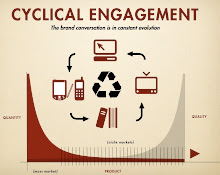
Brands and agencies often talk about connecting with consumers as a means of disruption, or a way of cutting through all the media clutter.
However, R/GA’s Nick Law said it best: “Instead of asking ‘How do we break through?’, marketers should be asking ‘How do we fit in?’”
Here are what the differences might look like:
BREAKING THROUGH
- rising up against the tide of consumer adoption, as opposed to riding along with it
- pushing underlying messages more so than creating conversations, or better yet, building brand stories
- looking at products as a consumer affinity, instead of value adds as a lifestyle choice
- exhibiting hubris – thinking that your brand destinations will guarantee engagement
- thinking of utility as a technology solution, not a cultural benefit
- deferring to shock value, instead of social value
- planning merely in terms of a campaign, instead of creating currency that can last indefinitely
- capturing consumer attention, not building loyalty
FITTING IN
- thinking about all marketing functions as somehow cause-related
- bringing a higher purpose to all brand interactions and purchase decisions
- socializing all media efforts by creating experiences that can be shared, regardless of platform or channel
- enabling people to adopt brand stories as their own, or, collaborating with them to create new ones
- recognizing that people are loyal to information & content, not destinations
- moving with market demand, not ad inventory demand
- crowdsourcing product development & marketing outreach when necessary
- not being afraid to fail in the process of developing new consumer insights
Please, by all means, add to the list!







